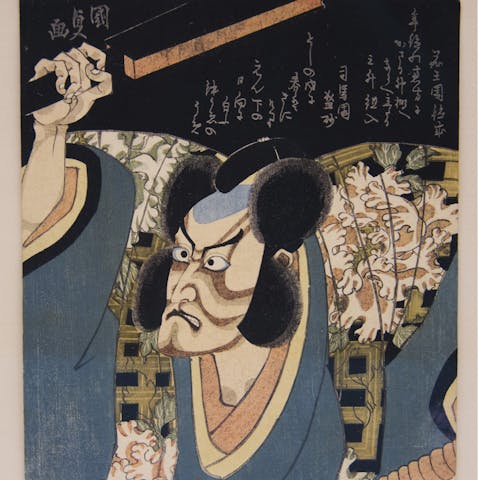Learn About Japanese Art
Japanese art can refer to any number of things, from ukiyo-e woodblock prints, calligraphy, pottery, ceramics, or even modern manga comics.
Japan has a long and ancient history as a relatively isolated culture surrounded by the ocean on all sides, and thus their artistic legacy is prosperous and distinctly recognizable. Today collectors across the globe admire the simple yet intricate beauty of antique works of art from Japan, and thus the Japanese art market is an increasingly popular one as the art world’s interests expand outside of the West. It is no wonder that Japanese art is so highly regarded; with a unique style and rich history, there is a lot to be fascinated by.
An Island of Its Own
Culturally, Japan is particularly different from many other countries, since it was often subject to quick invasions followed by long periods of isolation from the outside world. Prior to the 19th century, Japan operated on a system of military feudalism, focusing on internal conflicts, and thus conducted relatively little foreign invasions and expeditions compared to many Western countries. During the 17th to 19th centuries, Japan closed off its borders, with no Japanese citizen permitted to leave the island, and very foreign nations allowed to enter or trade with Japan in a period called sakoku . The idea was to prevent religious and colonial influence or indoctrination. It wasn’t until 1853 when the Perry Expedition forcibly resumed trade relations between Japan and the Western World.
"As popular culture became increasingly influential in Japanese life, woodblock printing emerged as a favorite way of producing an artistic image."

Ichikawa Danjūrō VII as Arajishi Otokonosuke, Utagawa Kunisada, probably 1829, Metropolitan Museum of Art
What this meant for Japan was that they were able to develop a culture that was very geographically concentrated and unique to the country, and of course this phenomenon is reflected in their art. They originated their own specific aesthetic preferences, and also learned to incorporate and assimilate the influence of the little foreign ideas they did come in contact with into their own style, working with and developing these effects within their own context with the passing of time. This resulted in the creation of an artform marked by its advanced skill-level, and unmistakable style.
Methods of Art
Historically, the most highly regarded form of artistic expression in Japan was painting. During the Edo Period, a duration of time lasting across three centuries, sculpture was perceived as being strictly associated with religion and painting became the best medium in which to represent subjects of contemporary life and ideas. Until the 20th century, Japanese people used a paintbrush to write, which increased their understanding and familiarity with the techniques of painting. Writing and calligraphy was in itself viewed as a form of art, and this sentiment heavily influenced the Japanese style of painting.
During this same period, as popular culture became increasingly influential in Japanese life, woodblock printing emerged as a favorite way of producing an artistic image. Popular subjects included scenes or actors from kabuki theatre, geisha, courtesans, myths, scenic landscapes, or images from everyday life. These depictions in the style of woodblock printing was called ukiyo-e, meaning “floating life”.
Also popular amongst collectors today are ceramics. Japanese ceramic work is graded as some of the best in the world, and can date back as amongst the oldest of Japanese works of art from the Jouman period which lasted 10,000 - 300BCE. This gives Japan’s ceramic tradition as being one of the oldest in the world. The enduring significance of the tea ceremony in Japanese culture owes to the high level of craftsmanship and esteem held by ceramicists throughout time. Amongst the most renowned potters in Japanese history are Honami Kouetsu, Ogata Kenzan, and Aoki Mokube.
Aesthetic Distinguishability
Perhaps most intriguing about Japanese Art as a whole is its seemingly effortless, unfussy and yet painstakingly detailed beauty. This aesthetic is comprised of a variety of diverse cultural traditions, reflecting the long held customs and ideas passed down through generations of art. In some ways their artistic tradition is defined by polarities - black and white calligraphic paintings contrasted with the brightly colored images of woodblock prints, an affinity for serene simplicity contrasted with an appreciation for intricacy and beauty. It is compelling ideas such as these that came to influence great Western movements in art such as Impressionism, Arts and Crafts, Art Nouveau, and 20th century modern architecture.
Japanese art is diverse and enduring in its traditions, allowing us a glimpse into a culture and society of another time. For many centuries, artwork of this region was hidden from the rest of the world and thus it is our great privilege today to have access to pieces that were previously unknown to us. Its historical significance combined with its perfected execution and calming beauty aids to enrapture and fascinate collectors and audiences alike even today. Whether it is in the form of paintings, prints, pottery, or anything else, there is surely something that Japanese Art has to interest you.

